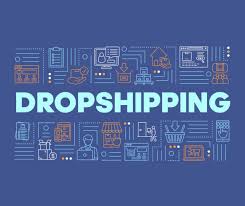
Introduction
Dropshipping is a business model that allows entrepreneurs to sell products to their customers without holding any inventory. In this guide, we'll explore the fundamentals of dropshipping and provide you with strategies to succeed in this lucrative industry.
Whether you're new to dropshipping or looking to optimize your existing business, this comprehensive guide will equip you with the knowledge and resources you need to thrive in the world of e-commerce.
Chapter 1: Understanding Dropshipping
Before diving into dropshipping, it's essential to understand how the business model works. Here are the key concepts:
- How Dropshipping Works: Learn the process of dropshipping, including how orders are fulfilled, and the role of suppliers, retailers, and customers.
- Pros and Cons: Explore the advantages and disadvantages of dropshipping to determine if it's the right business model for you.
- Choosing a Niche: Select a profitable niche market for your dropshipping business based on market demand and competition analysis.
By understanding these fundamentals, you'll be better prepared to start your dropshipping journey and build a successful online store.
Chapter 2: Setting Up Your Dropshipping Business
Once you grasp the basics of dropshipping, it's time to set up your business. Here's how to get started:
- Creating Your Online Store: Choose an e-commerce platform, such as Shopify or WooCommerce, to build your store and customize it to reflect your brand.
- Finding Reliable Suppliers: Research and partner with reputable suppliers who offer quality products and reliable shipping services.
- Setting Up Payment Gateways: Integrate secure payment gateways to accept payments from customers and ensure smooth transactions.
By following these steps, you'll establish a solid foundation for your dropshipping business and create a seamless shopping experience for your customers.
Chapter 3: Managing Inventory and Orders
Efficient inventory management is crucial for the success of your dropshipping business. Here are some tips for managing inventory and orders:
- Automating Order Processing: Use order management software to automate order processing, track shipments, and manage customer communication.
- Monitoring Stock Levels: Regularly monitor stock levels and update product listings to prevent overselling and ensure timely order fulfillment.
- Handling Returns and Refunds: Establish clear return and refund policies to address customer inquiries and resolve issues promptly.
By implementing efficient inventory management practices, you'll streamline your operations and provide exceptional service to your customers.
Chapter 4: Marketing and Promotions
Marketing plays a crucial role in driving traffic to your dropshipping store and converting visitors into customers. Here are some effective marketing strategies:
- Search Engine Optimization (SEO): Optimize your website for search engines to improve its visibility and attract organic traffic.
- Social Media Marketing: Leverage popular social media platforms to engage with your audience, showcase your products, and drive sales.
- Content Marketing: Create valuable content, such as blog posts, tutorials, and product reviews, to educate and inspire your target audience.
By implementing a comprehensive marketing strategy, you'll increase brand awareness, drive traffic to your store, and ultimately, boost sales and revenue.
Chapter 5: Scaling Your Dropshipping Business
As your dropshipping business grows, it's essential to scale your operations and maximize your profitability. Here's how to scale your business:
- Expanding Your Product Range: Diversify your product offerings to appeal to a broader audience and capitalize on new market trends.
- Optimizing Your Operations: Streamline your order fulfillment process, improve customer service, and invest in automation tools to increase efficiency.
- Exploring New Markets: Expand your reach by targeting new geographic regions or demographic segments to tap into untapped markets.
By adopting a strategic approach to scaling your business, you'll unlock new opportunities for growth and take your dropshipping venture to the next level.
Chapter 6: Analyzing Performance and Optimization
Regularly analyzing your dropshipping performance is essential for identifying areas of improvement and optimizing your strategies for success. Here are some key metrics to track:
- Sales and Revenue: Monitor your sales data, revenue trends, and profit margins to assess the financial health of your business and identify opportunities for growth.
- Conversion Rate: Measure the percentage of visitors who make a purchase on your store to evaluate the effectiveness of your product pages and marketing campaigns.
- Customer Acquisition Cost (CAC): Calculate the cost of acquiring new customers through advertising and marketing efforts to ensure a positive return on investment (ROI).
By analyzing these key performance indicators (KPIs) and optimizing your dropshipping strategies accordingly, you'll maximize your profitability and achieve long-term success in the competitive e-commerce landscape.